Student Blog
Jessica
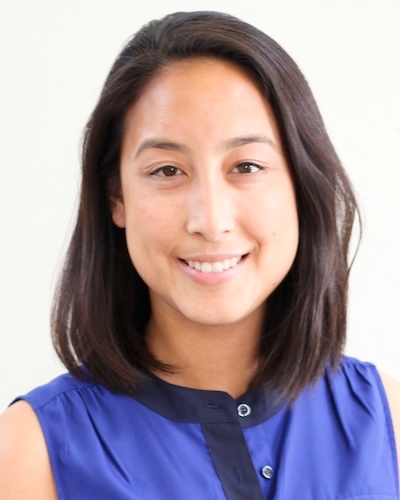
It’s More Fun in the Philippines! ⟩
March 21, 2017, by Jessica
Externships International What are OS/OT?
Hey everyone! I’m back from my three-week absence and I’d love to share what I’ve been up to. As Raisa mentioned in her last post, students in their 2nd year of the Entry-Level Master’s program and the Post-Professional Master’s program plan their own two-week externship experience to engage in during the middle of the Leadership Capstone course. What’s great is that the externship happens right before spring break, so students are able to either continue on in their externship or travel for the full 3 weeks! For my externship, me and 4 other students decided to volunteer with the EN/Ability Project in the Philippines, building adaptive chairs out of cardboard for children with disabilities in a rural village of Cebu.
The EN/Ability Project is an outreach program that provides therapeutic services to underserved children with disabilities in the rural provinces of Cebu. On this volunteer trip, we led a group of volunteers and therapists in building adaptive seating for children with disabilities in Borbon. The children that were identified to benefit from the adaptive chairs have disabilities that impact their ability to participate in fundamental activities in their daily lives, such as feeding, playing, and interacting with their families. We created about 30 individualized chairs, based on the designs of the Adaptive Design Association, an organization that specializes in creating customized seating from low-cost, recyclable materials. We received a training from the founder of the organization, Apple Sepulveda, before we left for the trip. (She also happens to be in the OTD program currently!) This was the first time the EN/Ability Project decided to do this type of program, so it was exciting to be able to start off a new tradition for them.
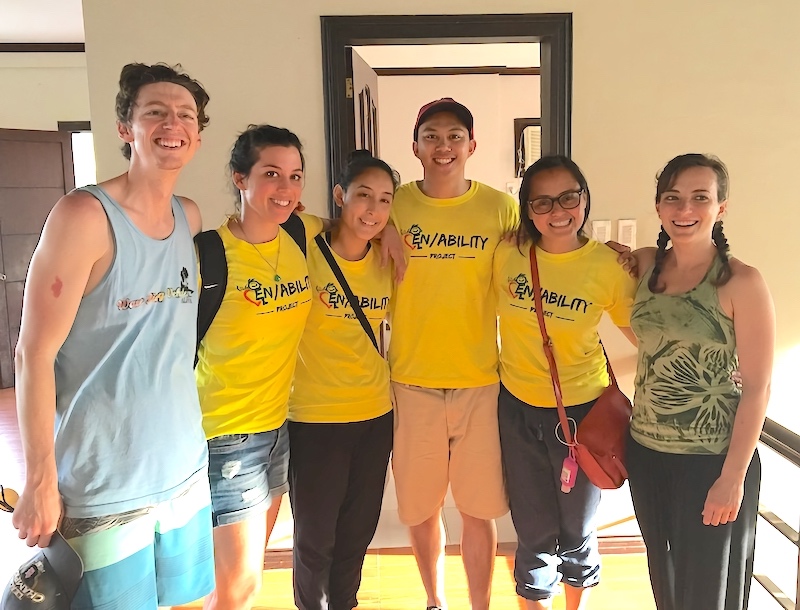
USC OT externs with our supervisor, Apple
We met up with around 30 volunteers in Cebu City, and from there we were transported by bus around 2-3 hours north to a small town called Borbon to meet the children we would be assessing and measuring. The volunteer group was a mix of people from different backgrounds and disciplines; some OTs, PTs, and other local volunteers who just wanted to help out! The USC students served as team leaders, and our teams were composed 1-2 other local volunteers. Each team was matched up with 1-2 children, who we met and measured on that first day. I was really glad I had a local volunteer on my team who spoke Cebuano, the language of this region, as the families we met did not speak much English.
After we met the children and families, we headed to our vacation house that all of the volunteers would be staying in for the duration of the program. Lemme tell you . . . that house was awesome! It was three-stories, large enough to house all 30 volunteers. The house was super spacious, with enough room for all of us to build our chairs. There was even a large lap pool and basketball court in the backyard, with beach access right behind the property! The great thing about this project is that the organizers wanted to make sure that there was a good balance of work and fun, in order to make the experience more enjoyable for everyone.
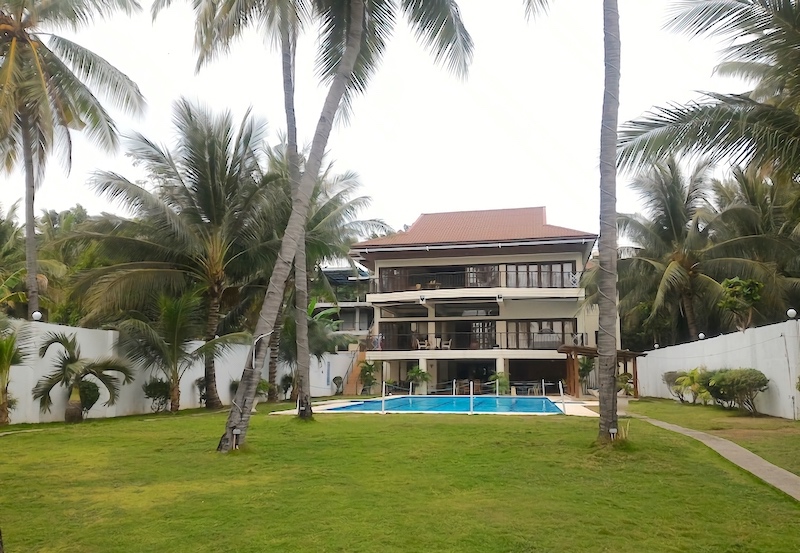
Vacation house
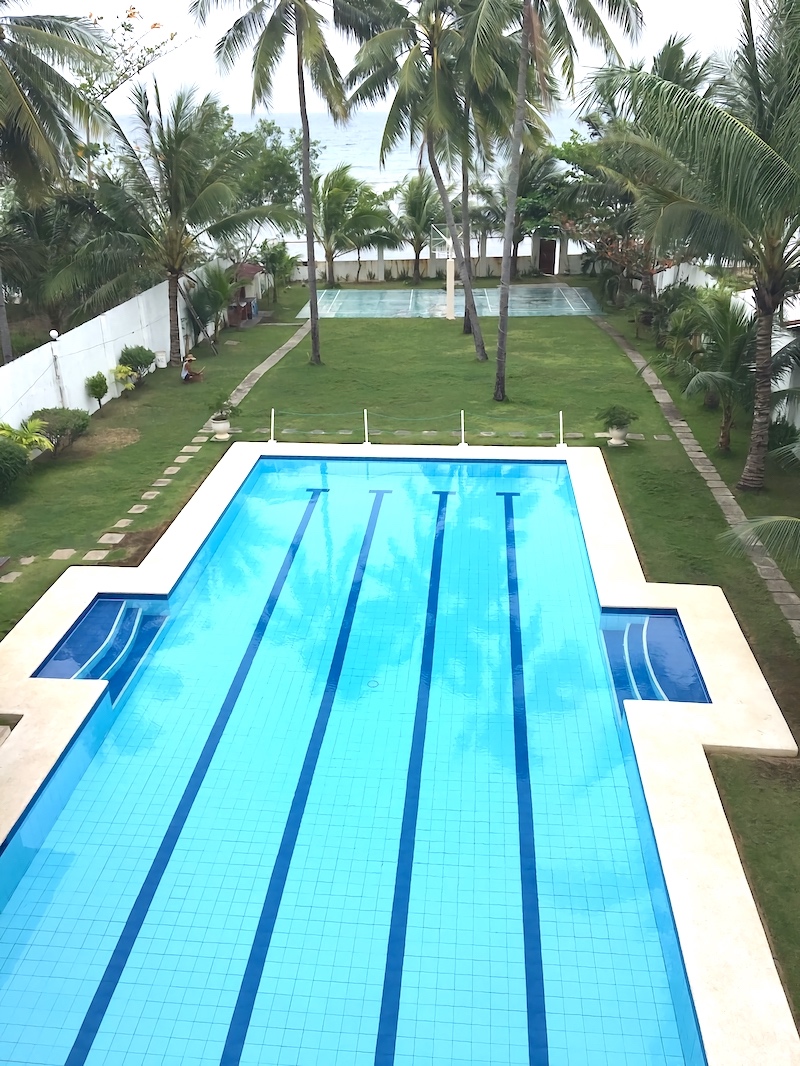
Backyard of vacation house
The first night we took all of the donated cardboard and layered them with glue, to serve as the foundation for our chair building the next few days. In the US, we have much thicker, sturdier cardboard. However in the Philippines, they only have 1-ply cardboard which is much thinner, so we needed to layer about 4 sheets of cardboard in order to have a study base. We also spent some time on our team planning out and sketching our designs. The next day, the building began! With our measurements in hand, lots of cardboard, glue, and power tools, we spent the next few days focused on creating the chairs. I knew it was going to be a lot of hard work going into it, but it was much more labor intensive than I even anticipated. (Plus, the humidity of the Philippines didn’t help much either.) After 30+ hours of labor, all of the hard work was worth it once we saw our finished products and the smiles on the children and families’ faces.
From this . . .
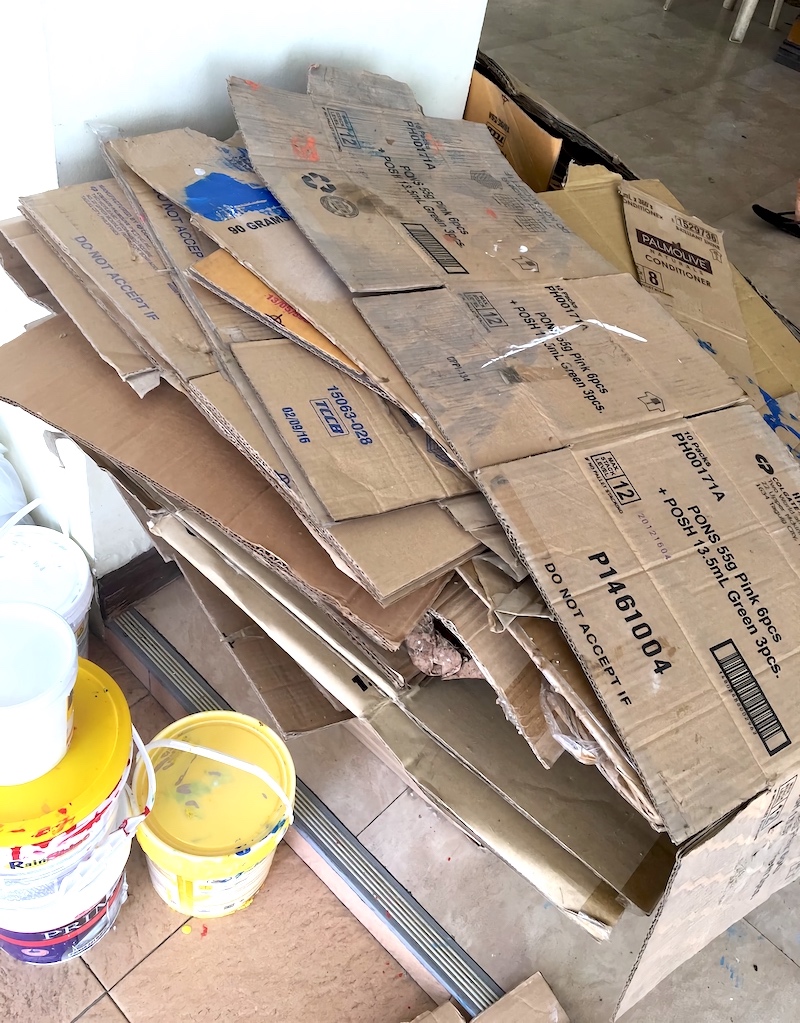
We made this . . .

Which became this!
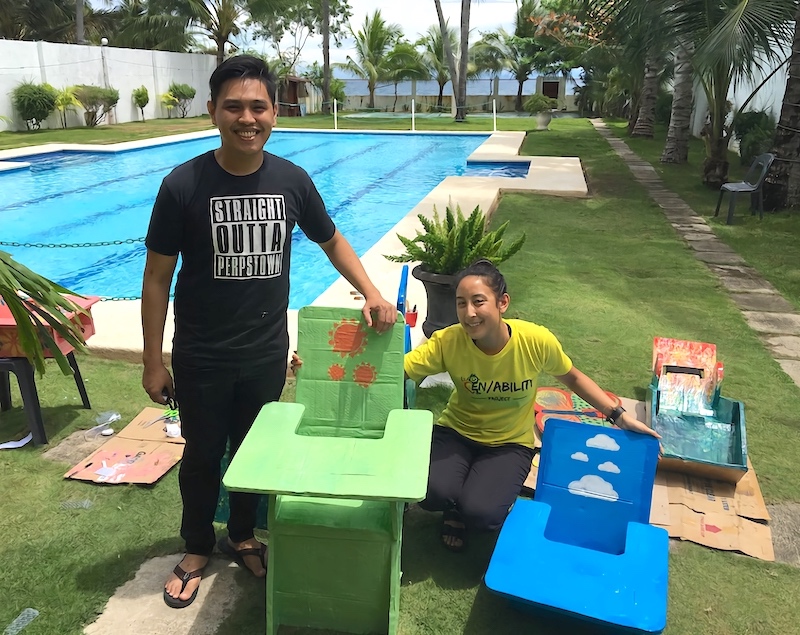
Me and my teammate and our finished chairs
Hopefully the children and families are happy with their new chairs. 😊
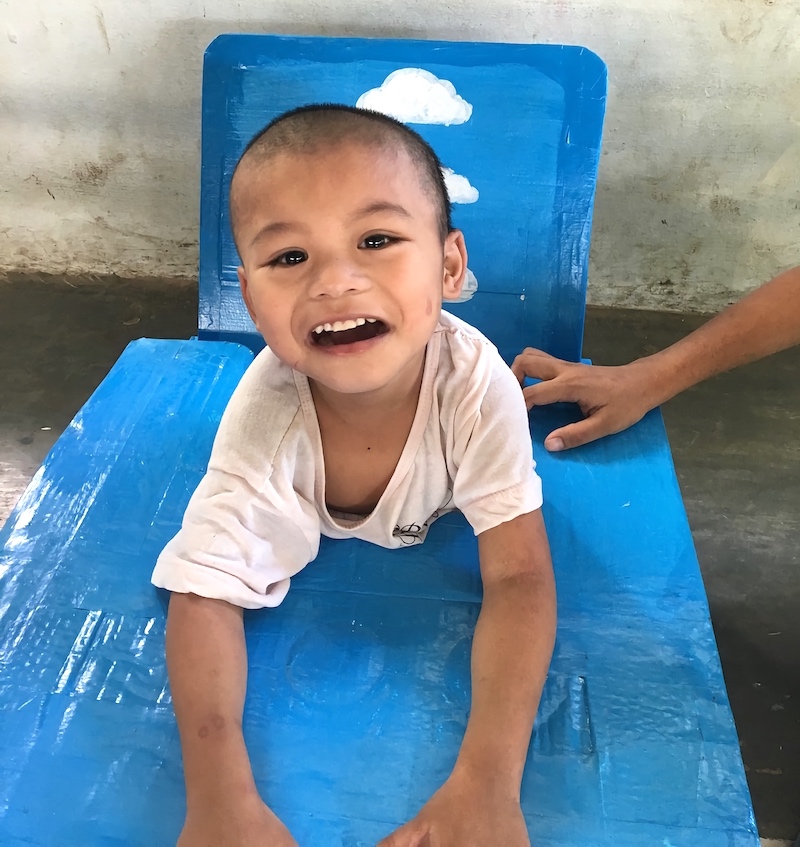
Mark with his new chair
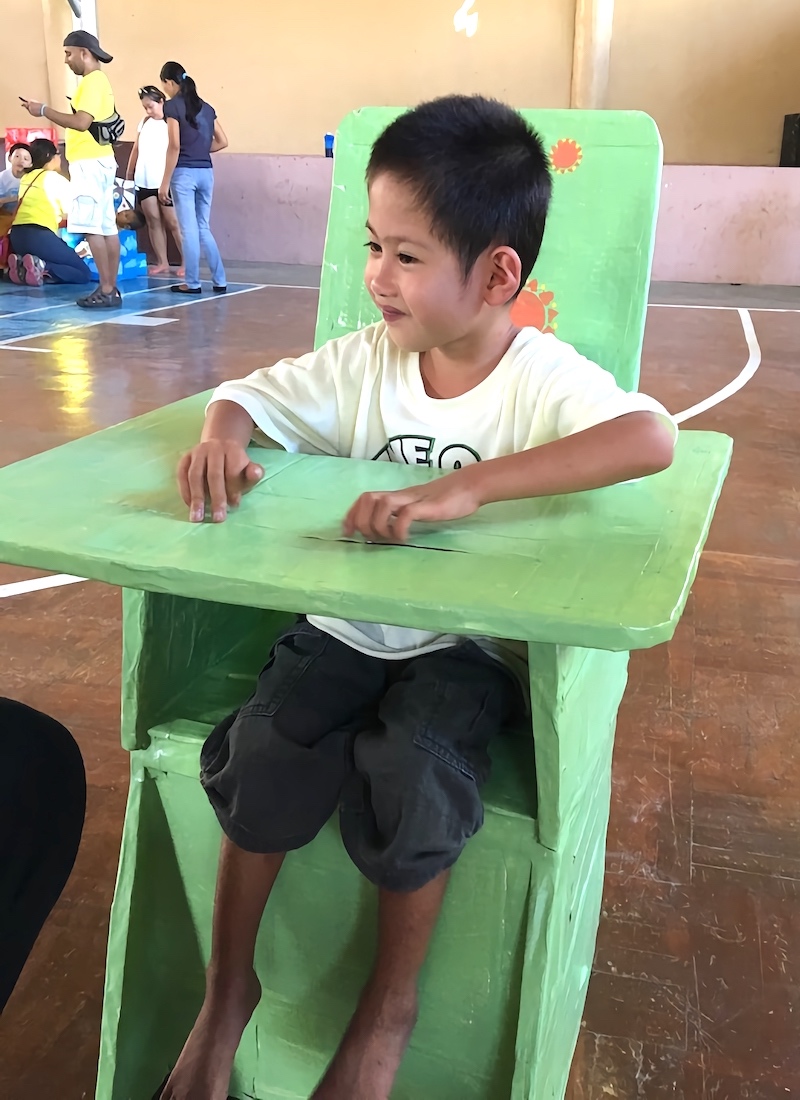
Kirby with his new chair
One of the best parts of this experience was not only meeting the children and building the chairs, but also getting meet and collaborate with OTs from the Philippines and creating new friendships. As visitors, we felt so welcomed by all of the local volunteers. We even karaoked and toured around the island with some of them afterwards!
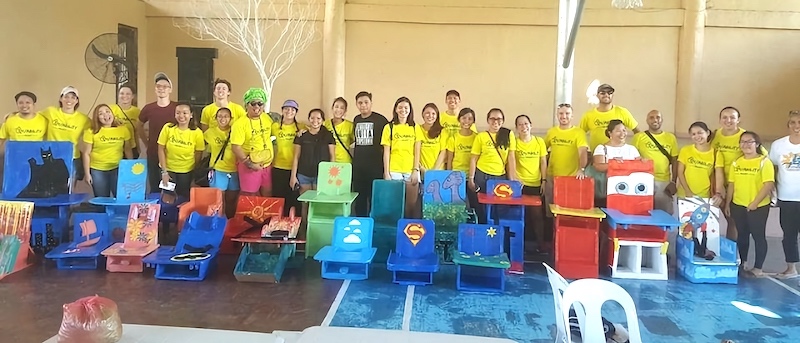
All the EN/Ability project volunteers
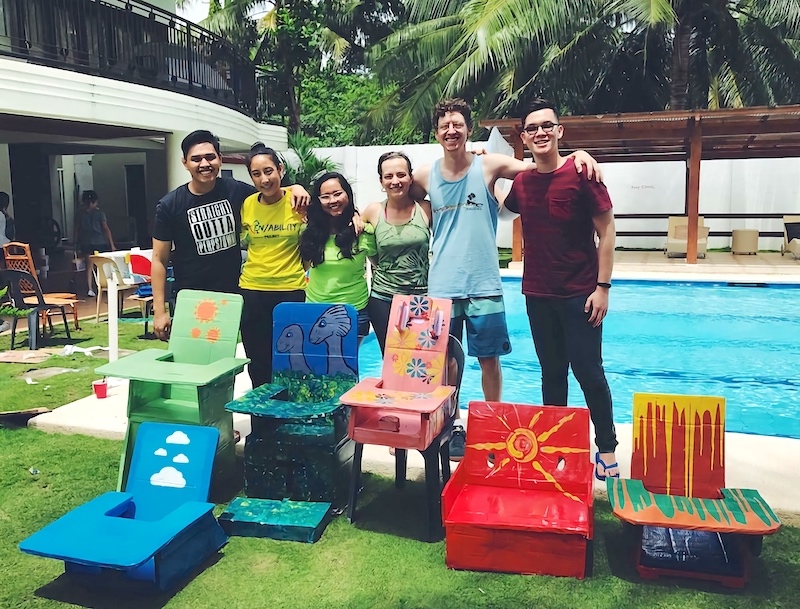
With our new OT friends!
Overall, I had such an amazing externship experience and visit to the Philippines — I would do it all again in a heartbeat! Check out this video, made by the EN/Ability Project, that highlights our whole experience!
⋯

Working in OT School ⟩
February 14, 2017, by Jessica
Many students also ask if it is possible to work while in the program. It is definitely doable, but the amount of hours depends on your personal capacity to manage school and work. Keep in mind that the Entry-Level Master’s program is a full-time commitment, so realistically you could only work part-time. In a typical week, you have three full days of class from about 9:00am to 4:00pm, one day of fieldwork, and one day off (usually Fridays!). I have personally worked 10-15 hours per week throughout the program, which has been a good balance for me. I wanted to work part-time in order to have enough spending money for myself, and not necessarily rely on loans for all of my personal needs. My job is on-campus, so it is very convenient for my schedule, as they are very flexible and recognize that school obligations come first. As I mentioned in my previous post, there are opportunities to become a student worker for the division in various capacities!
⋯

Financing USC: Scholarships Edition ⟩
February 7, 2017, by Jessica
In continuing with my “Financing USC” series, this week’s post is all about scholarships. Students are always interested about what scholarship options are available, and the likelihood of getting one. Hopefully this brief post can help answer some of those questions!
There are scholarships available to students from the OT division based on academic merit and potential for special contributions to the field of OT. The most common are the Division Tuition Scholarships, which are awarded on the basis of academic achievement, mainly for first-year entry-level Master’s students. The amount of the scholarship varies each year and between students, and goes directly to help pay for your tuition. A highly competitive scholarship through the OT division is the Research Assistantship, which is awarded based on academic merit primarily to first-year entry-level Master’s students. For this scholarship, generally 8 units of tuition are covered per semester, with a $5500 stipend per semester, with student health services and student health insurance included. Keep in mind, though, that these are really hard to get! Another unique option is to become a Division Student Worker! These are considered division awards, and students chosen for these positions will fulfill varies duties for faculty and staff members. Typically, only 2nd years receive these positions. Some of the jobs you could have in the division are being a classroom assistant, a fieldwork assistant or office assistant, and being a student ambassador (like us!). Students in these positions get paid hourly for their work, and have a flexible schedule of about 10 hours per week. If you’re interested in any of the division scholarships, be sure submit the scholarship application at the same time you submit your application for the program.
There are many other unique scholarship options through the division, as well as outside of USC, which are listed on our website. Check that out and see if you’re eligible to apply for any of those scholarships!
⋯

Financing USC: Loans Edition ⟩
January 31, 2017, by Jessica
The most common questions I’m asked from prospective and admitted students are always about the cost of USC and how students pay for it. Rightfully so — USC is definitely a financial investment! However I do think it’s worth it — the caliber of the professors and quality of education you get here makes your USC degree truly valuable. I’m going to briefly share about some of the options you have in order to finance your OT education at USC. This post will focus on student loans.
Federal Loans
Most students do take our loans in order to pay for a majority of their tuition, fees, & living costs while in the program. Federal loans are the most common, and typically have lower interest rates than private loans. As a graduate student, you are typically eligible for the Direct Unsubsidized Loan (also referred to as Direct Stafford Loan) and the Direct PLUS Loans. To be eligible for the Direct Unsubsidized Loan, you just need to be enrolled half-time and don’t necessarily need to demonstrate financial need. Most students will qualify for this loan, and you will be eligible to receive this loan for the duration of the program each semester. Graduate students are eligible for up to $20,500 per academic year, with the current interest rate set at 5.31%. Also, you will not need to start paying back this loan until after you graduate. The other loan that most students use to supplement is the Direct PLUS Loan. This is also a federal loan, and you must be enrolled at least half-time with no adverse credit history. With this loan, the maximum you can borrow is the full cost of USC minus any other financial aid you receive. The current interest rate for this loan is 6.31%. Like the Direct Unsubsidized Loan, you do not need to make any payments until after you graduate.
Public Student Loan Forgiveness
If the thought of taking out these loans is daunting (which it is for most), keep in mind that there currently is a Public Service Loan Forgiveness Program that you may be eligible to enroll in after graduation. This is a federal program that will forgive the remaining balance on your Direct Loans after you have made 120 qualifying monthly payments (~approx. 10 years) while working full-time for a qualifying employer. Qualifying employers for this program include government organizations, non-profit organizations that are tax-exempt under Section 501(c)(3) or provide a qualifying public service. This is definitely something to consider and take advantage of, if it is still in place when you graduate.
I hope this brief summary of some of your loan options was helpful! Stay tuned for more posts about other financial aid options.
⋯

New Year, New Courses ⟩
January 17, 2017, by Jessica
Happy New Year, everyone! 2017 is a big one — last semester of OT school, graduation, last fieldwork experience, taking the boards (and passing hopefully), finding a job (hopefully), and getting married! AH!
This semester is an exciting one since we’ve finished our immersion courses, and can now take electives. This is something unique to USC, since other OT schools don’t necessarily give students the option to take electives in the practice area they are most interested in. For me, I’m most interested in pediatrics, so I geared all my electives towards that. There are so many electives to choose from, so no matter what you’re interested in, you’ll find something to fit your interests.
Here’s a peek at my schedule this semester:
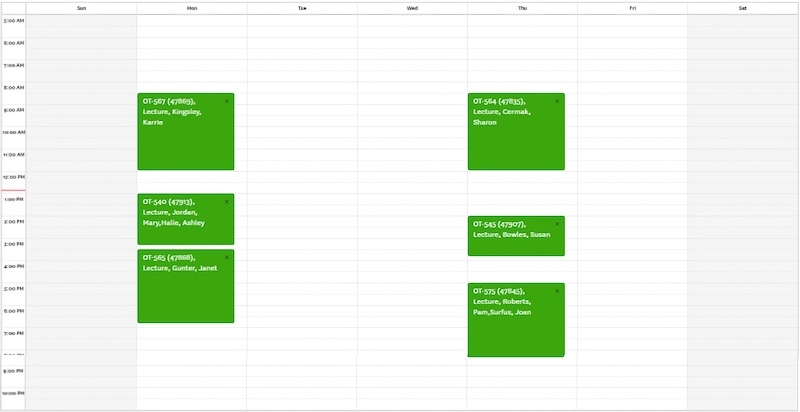
It just so happens that all of the classes I decided to take fell on only Monday and Thursday. This worked out well for me since I also work part-time, giving me three weekdays to work.
Here’s the courses I’m taking this semester:
OT 567: Contemporary Issues: Occupational Therapy in Early Intervention
OT 540: Leadership Capstone
OT 565: Sensory Integration Interventions
OT 564: Sensory Integration
OT 545: Advanced Seminar in Occupational Science
OT 575: Dysphagia Across the Lifespan: Pediatrics through Geriatrics
The electives I chose are in bold, and the other two courses are required for all students. Check out our course descriptions for more detail about all of our electives and other courses in the program.
Looking forward to sharing all the exciting things happening in my last semester with you all!
⋯





